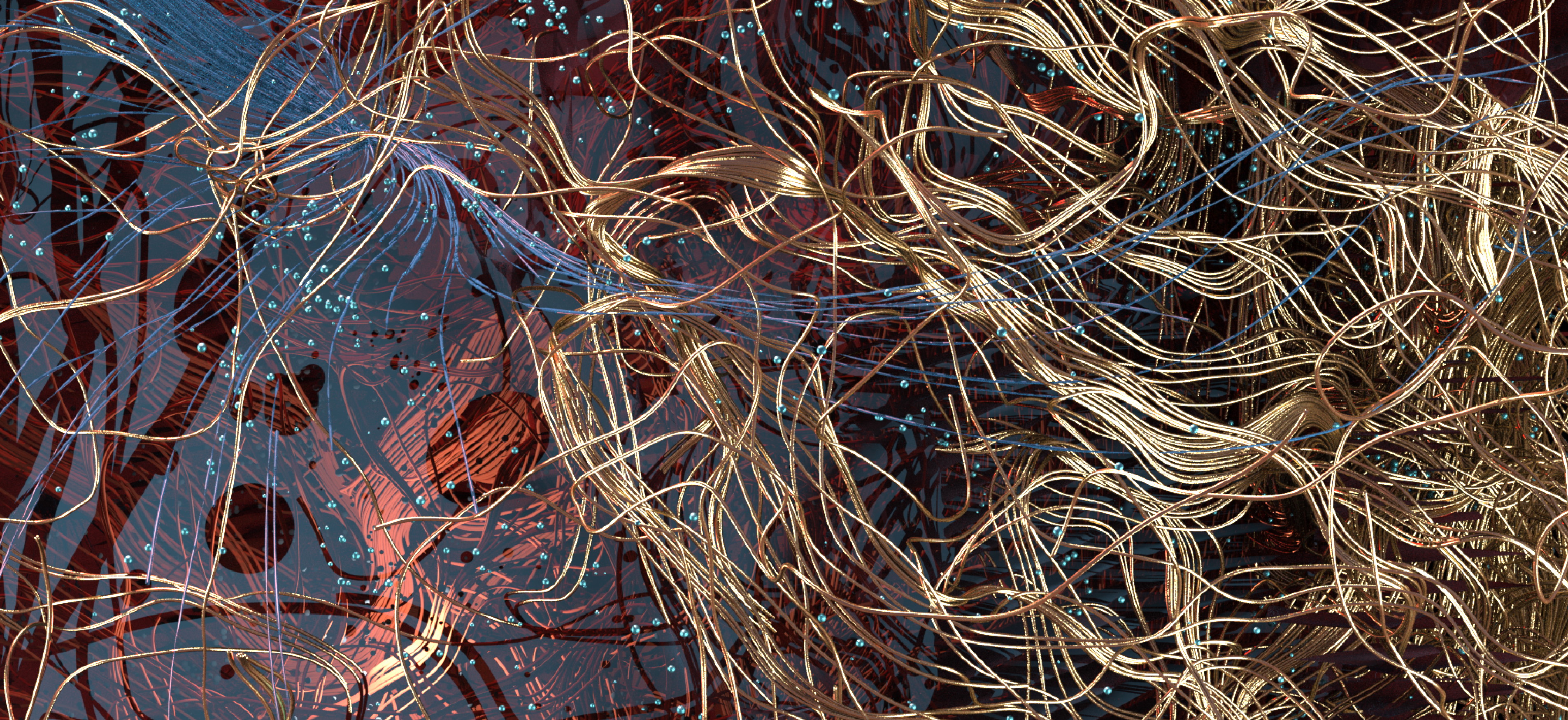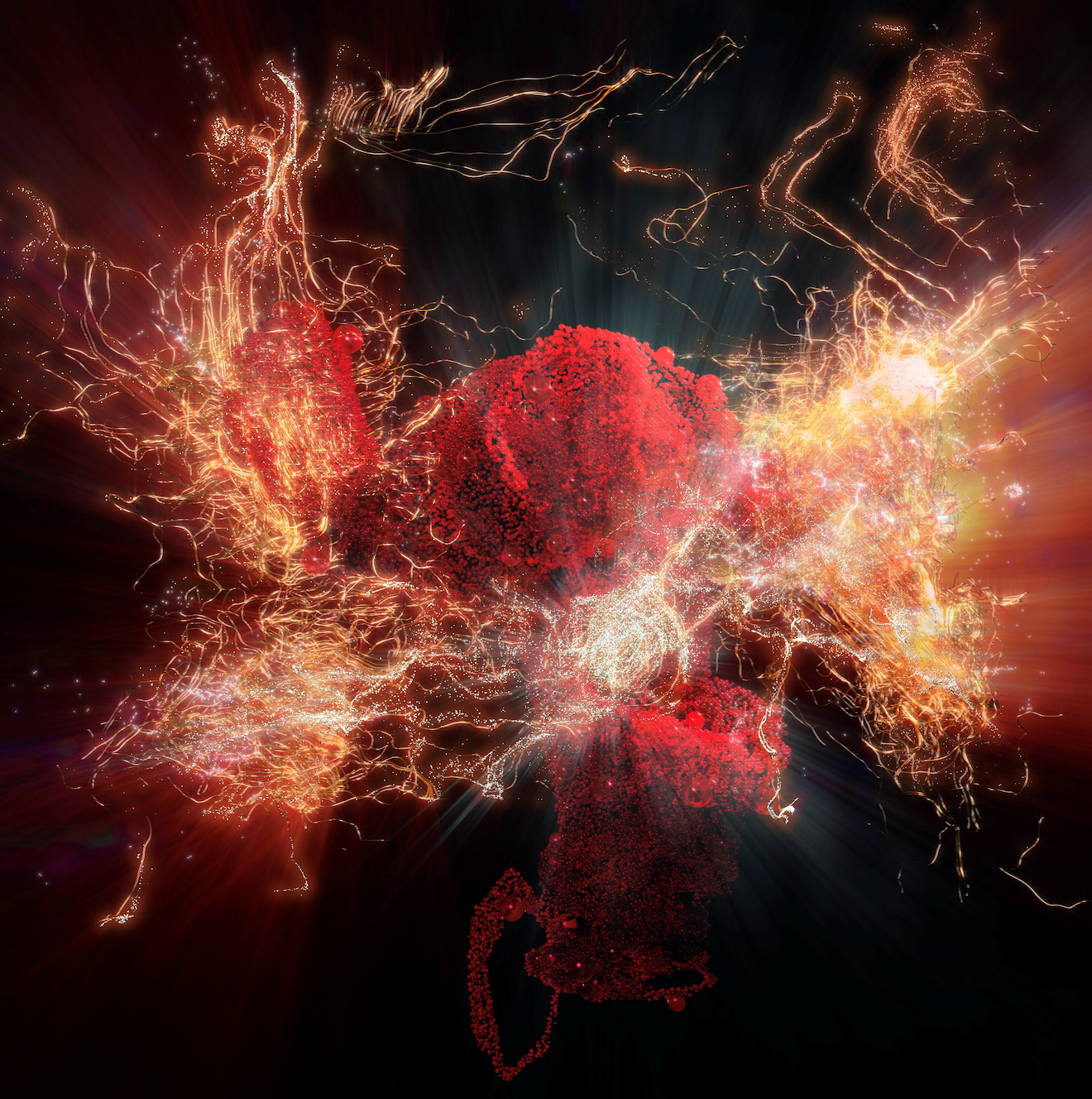During her residency at Fraunhofer MEVIS, media artist Eli Joteva created a remarkable installation: To obtain the material for her digital artwork, the Bulgarian lay down in an MRI scanner for hours. The result: a digital installation called “IntraBeing.“ It shows oversized organs and highly complex webs of nerves that move meditatively and mysteriously right before the viewer's eyes.
The third artist residency, which Fraunhofer MEVIS is organizing together with Ars Electronica in Linz and the International Fraunhofer Talent School Bremen, is once again being held in cooperation with the Walle School Centre in Bremen. For the first time, the UCLA ArtSci Center in Los Angeles is also involved. The title of the program is “STEAM Imaging“ – STEAM stands for the linking of science, technology, and mathematics with other disciplines, such as the world of art. The starting point of the residency is to bring artists together with scientists and school students to transcend disciplinary boundaries, develop flexible forms of learning and collaboration, and teach skills to use new technologies effectively and critically. The residency allows artists to engage in intensive exchange with MEVIS experts and to link their work with the latest scientific methods and approaches. An integral part of this is the joint development of the STEAM online course for young people. Based on the unusual alliance of art and science, it breaks new ground in approaching scientific and technical topics at school.
Bulgarian media artist Eli Joteva lives in the United States and has been tackling science-related themes for some time: she incorporates influences from quantum mechanics and neurophysics into her work and uses sophisticated imaging techniques such as infrared cameras and laser scanners to create her digital installations. “I'm very inspired by the mysteries of the invisible, such as how forces and vibrations outside our perception affect us,“ she describes. “That's why I try to use imaging techniques to look into spaces we can't perceive with our senses.“
At the STEAM imaging residency, she was fascinated by the possibility of being able to take a deep, detailed look inside the body and process it artistically. The basis for this were images taken with an MRI scanner – an imaging technique that uses strong magnetic fields to deliver extremely detailed and, at the same time, body-friendly 3D images from inside a person. “I have always been interested in the complex ecosystems inside the human organism and have often used my own body in my work,“ Joteva says. “That's why I was excited to be able to take MRI data of my body and work with it.“
An important element of the residency is a STEAM course for students. Joteva designed it together with the developers of the residency program, Bianka Hofmann and Sabrina Tölken, and their colleague Hanne Ballhausen. For the conception, the Fraunhofer MEVIS team met in internal workshops to break up the planned scientific and technical teaching content and integrate it in a new way. The course is designed around objects that play a direct or indirect role in the otherwise digital everyday work of the experts: a skeleton and a phantom, i.e., a physical model for research purposes. Then the specific interests and competencies of the artist were incorporated. The course was held in English and online. On ten evenings, it dealt with topics such as “Analog and Digital Simulations for the Body“ and “What Gets Lost in the Digital World?“ The young people had the opportunity to have their own hands-on experiences, which were also carried over into the lessons at the Walle School Center. “For example, I showed them how to scan objects from their surroundings and create 3D models from them, which they can then share with others via the internet in augmented reality,“ Eli Joteva tells us. “The students really enjoyed it – the feedback, anyway, was very positive!“
For her artwork development, Joteva was particularly taken with an MRI method called DTI that can be used to map the shape and also the behavior of nerve fibers. Normally, this method is used for brain images. Joteva had the idea of using it for other parts of the body, especially the chest, pelvis, and feet. However, due to the pandemic, it was not possible for her to travel to Bremen and acquire the images there. Instead, she was able to use an MRI scanner from MEVIS research partners at the University of California in Los Angeles LONI.
The scans proved to be an ordeal: for a total of eight hours, spread over two days, Joteva had to lie down in the scanner's narrow tube, remain there, and keep holding her breath so as not to move. “And this despite the fact that I suffer from claustrophobia,“ the Bulgarian tells us. “There were many moments when I wanted to press the button so they would get me out. But in the end, I endured it for the sake of the art.“
Numerous online sessions with Fraunhofer MEVIS experts followed. Eli Joteva learned how and with which software tools the image data could be processed and interpreted. “Without this incredible support, the project would not have been possible,“ she enthuses. “But I also noticed that the in-depth engagement with an artist definitely fired up the people at MEVIS to push the limits and possibilities of what they do. It was a very inspiring process.“
Based on the processed image data, Eli Joteva created a room-sized installation using 3D graphics software. “IntraBeing,“ as the artwork is called, shows the alienated, oversized organs from Joteva's body surrounded by highly complex meshes of nerve fibers. The structure is in constant, meditative motion – streams of hydrogen atoms and magnetic fields that are invisibly connected to the organs. “The behavior of these hydrogen atoms cannot be predicted because they are constantly docking to and from other atoms,“ the artist describes. “This scientific uncertainty fascinates me – it shows that when we penetrate the body, we always discover something we don't understand.“
The work can be seen from 8-12 September 2021 at the Ars Electronica Festival in Linz, one of the world's most renowned events for media art. Alternatively, it can be experienced in one's own four walls – via the internet as “augmented reality.“
 Fraunhofer Institute for Digital Medicine MEVIS
Fraunhofer Institute for Digital Medicine MEVIS
